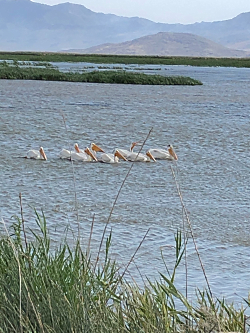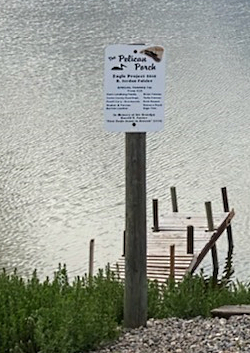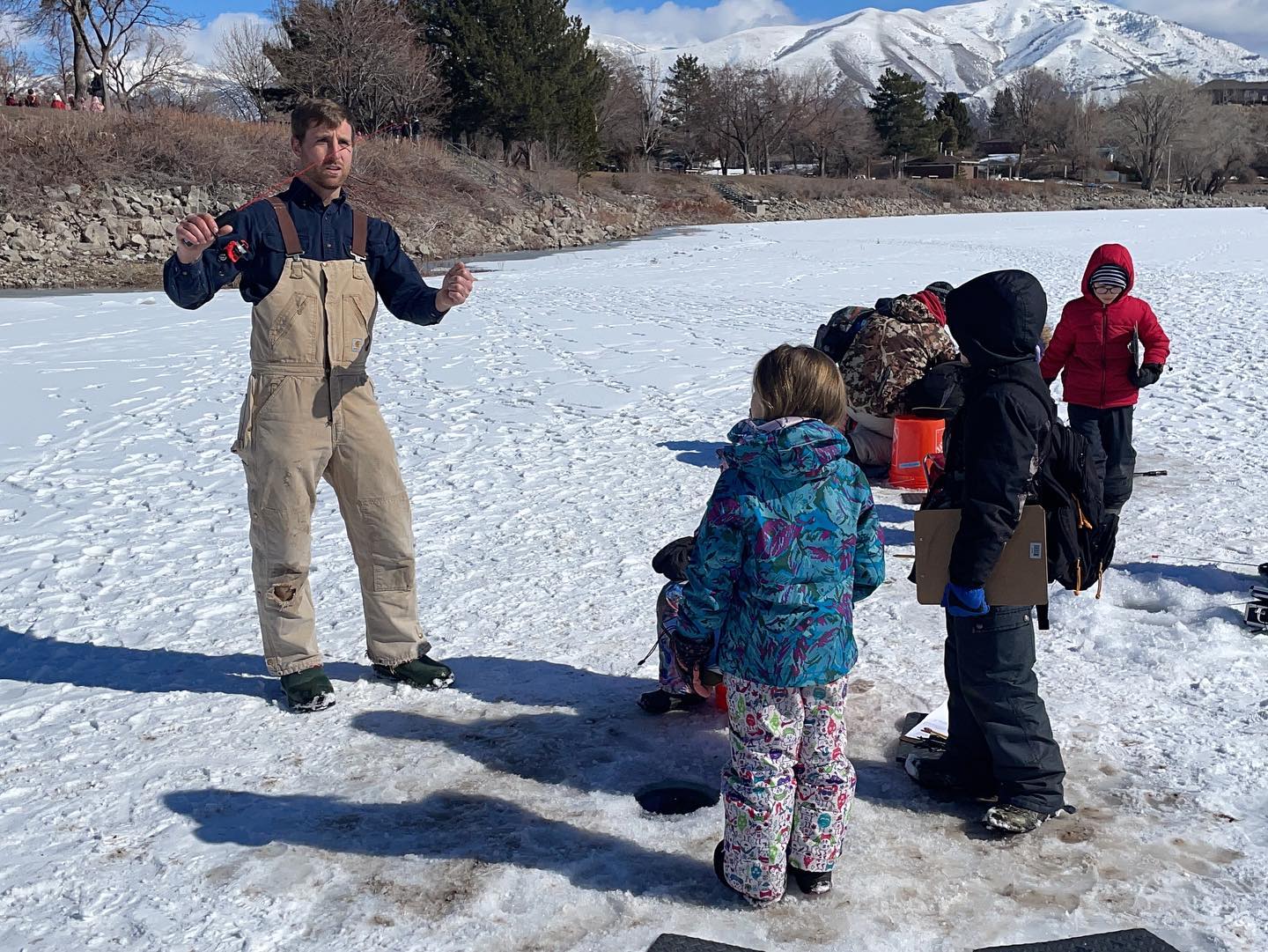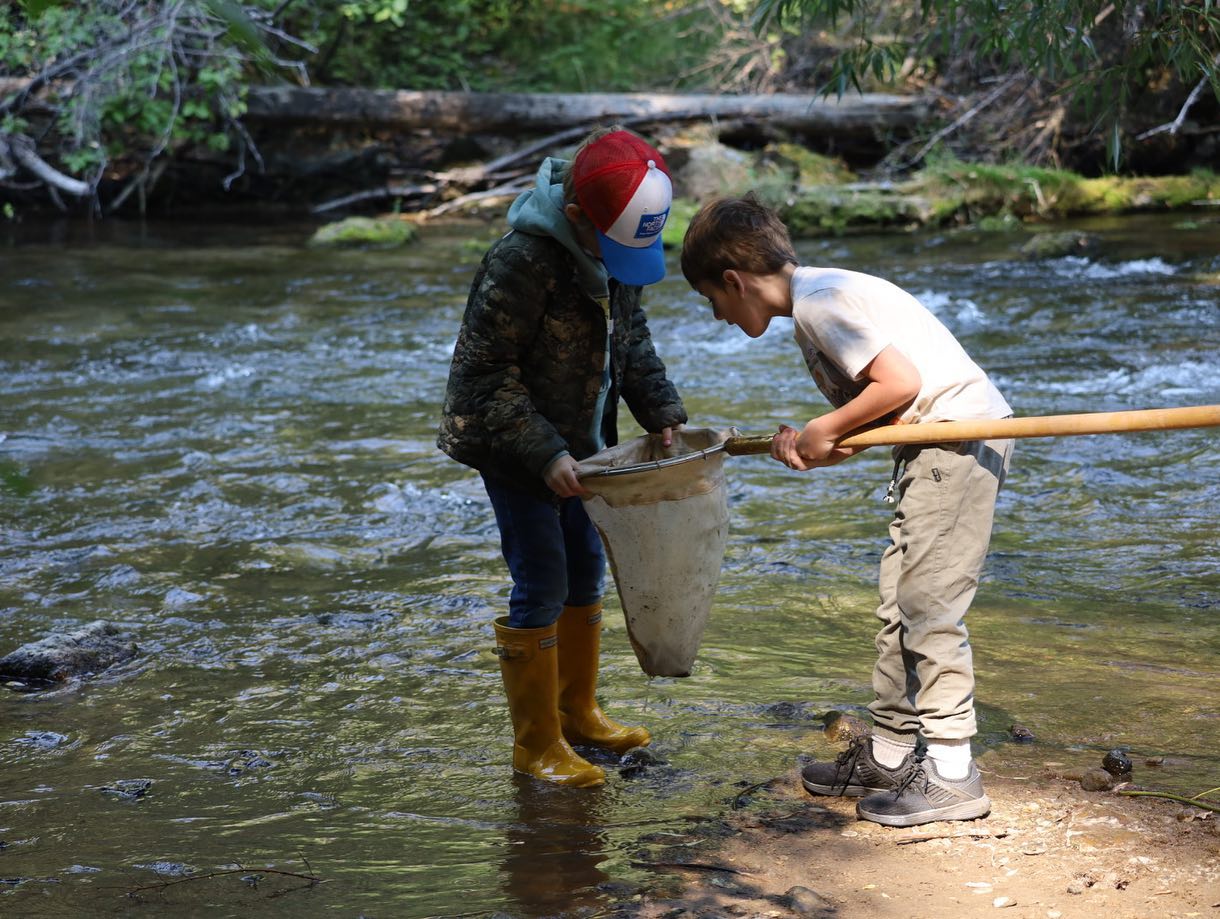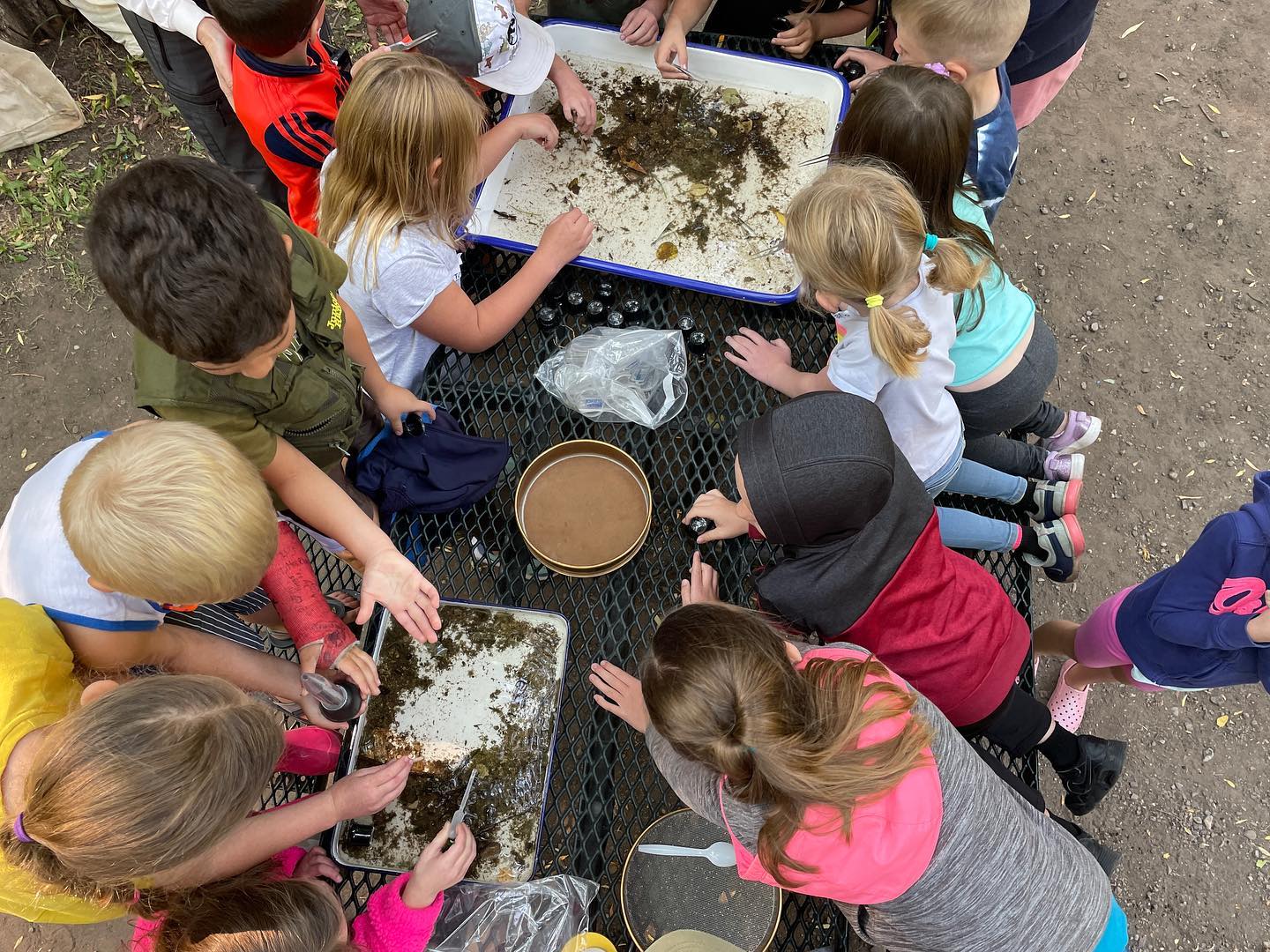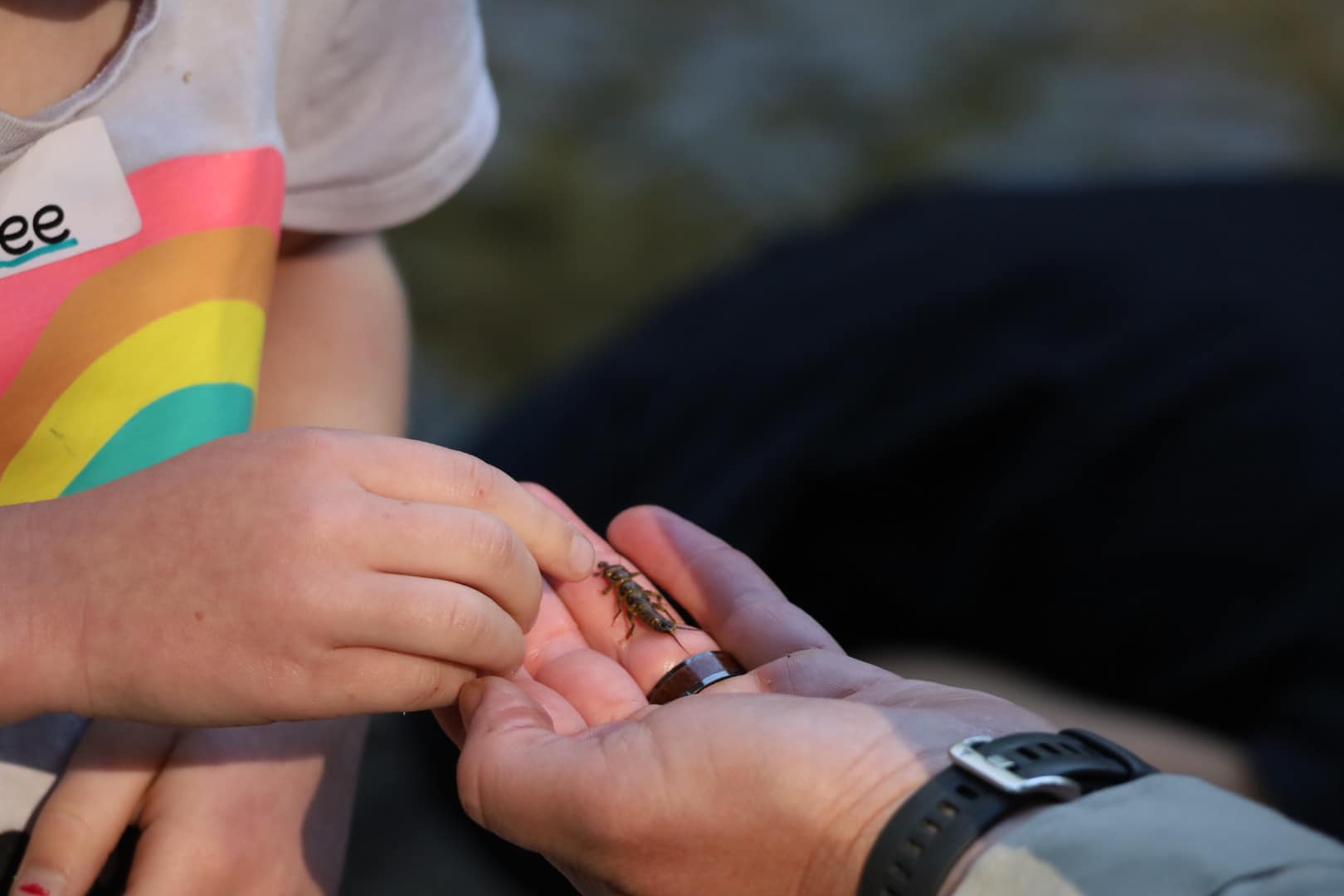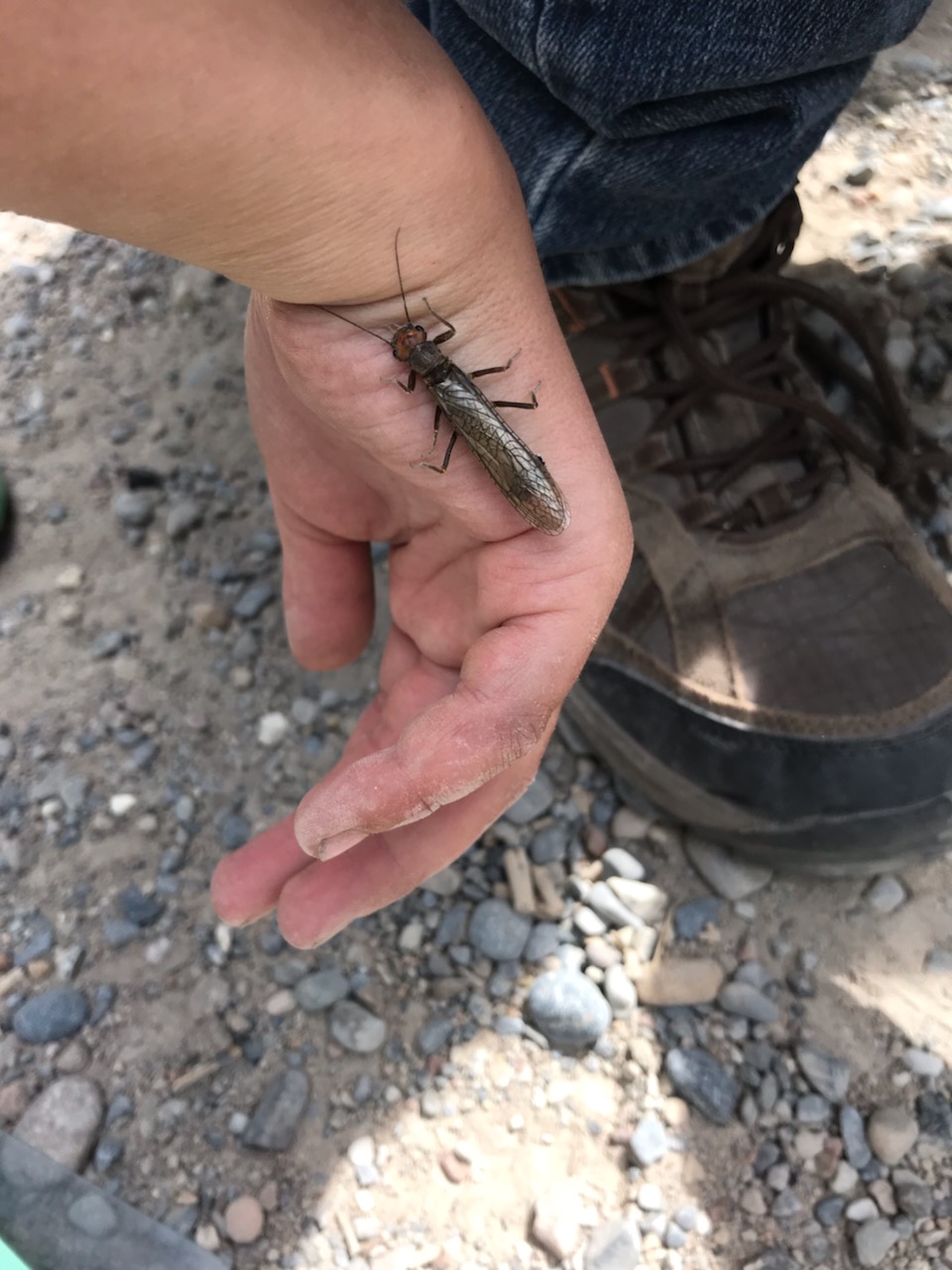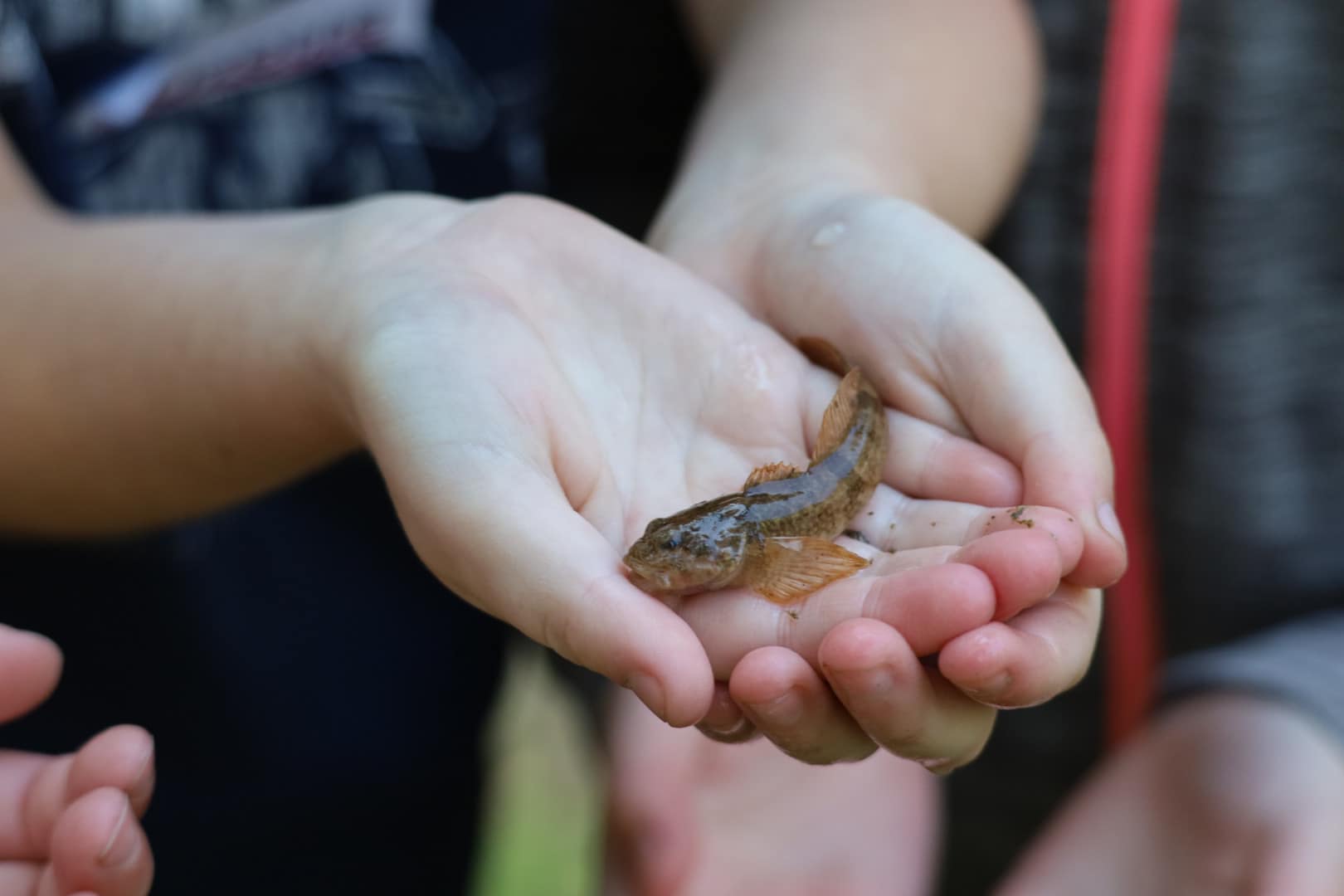
Courtesy Joseph Kozlowski & Copyright Jack McLaren, Photographer

Courtesy & Copyright Joseph Kozlowski, Photographer
 Banana Boy James
Banana Boy James
Courtesy Joseph Kozlowski & Copyright Jack McLaren, PhotographerI sit on the front swivel seat of a drift boat gliding across the smooth water of Newton Reservoir. The sun begins to send morning rays of brilliance over the Cache Mountains. My only child, a 14-month-old boy named James, excitedly wriggles in my lap. Behind me in the captain’s seat is my long-time buddy, Jack McLaren. Jack and I met in graduate school where he was working on a doctorate in watershed sciences and fish ecology. Jack and I have been friends ever since, and any day fishing with Jack is one I cherish.
Jack tells me the Largemouth Bass are on the other end of the reservoir, in the shallow, weedy water where they feast on any living creature they can find, primarily small Bluegill who nest in that area. Using two oars, Jack begins paddling the boat across the reservoir. James’ eyes are mesmerized by the turbulent water eddies that form around the oars with each stroke, and I peacefully observe the world and wings around me. Western Kingbirds, with their gentle yellow bellies and grey head, play chase games as they dive and duck from one cottonwood tree to another on the water’s edge; Bank Swallows make clicking and clacking noises like pulsing electrical wires from the steep muddy embankment where a healthy colony has formed; and Wilson’s Phalaropes do a mating display where the modestly colored male hovers in the air over the brightly colored female, bobbing up and down for nearly 5 seconds, before gently landing next to her.
We reach the far end of the reservoir and begin fishing. Jack pulls a plastic green frog across the top of the water; I bounce a long, brown rubber worm with a neon tail under the water; and James, well, he grabs each bag of rubber worms from the tackle box and throws them over the side of the boat.
Just as I finally distract James with a Banana, “THWAPPP!!” a splash sounds and a commotion in the water catches my attention. A hungry bass thought frogs were on the menu and was fooled by Jack’s lure. He reels in the bass and James and I look at the beautiful, greenish/yellowish creature with the distinguishable black stripe down the side. James, with a mischievous smile, courageously reaches out his pointer finger and gently runs it along the slimy, scaly body of the fish.
We continue to fish and just take in the beautiful morning when the thought strikes me.
“This little 14-month-old is going to be my new, best buddy for the rest of my life. Observing, respecting, being aware of, and appreciating nature has always been important to me. How do I pass this same kind of love and respect for nature onto my own son, the next generation, as my father and mother did to me?”
To that, I don’t have an answer, but maybe, just maybe, James being mesmerized by the flow of swirling water eddies around oar paddles or him using his delicate finger to bravely stroke the side of a slimy fish may be just the right start.
This is Dr. Joseph Kozlowski, and I am Wild About Utah!
Credits:
Images: Courtesy & Copyright Joseph Kozlowski, Photographer, Used by Permission
Featured Audio: Courtesy & Copyright © Kevin Colver, https://wildstore.wildsanctuary.com/collections/special-collections/kevin-colver and including contributions from J. Chase and K.W. Baldwin
Text: Joseph Kozlowski, Edith Bowen Laboratory School, Utah State University https://edithbowen.usu.edu/
Additional Reading Links: Joseph Kozlowski & Lyle Bingham
Additional Reading:
Joseph (Joey) Kozlowski’s pieces on Wild About Utah:
Experiential Education Archives, Wild About Utah https://wildaboututah.org/tag/experiential-education/
Hitchcock, Ed, 7 Tips for Fishing with Kids, Take Me Fishing, the Recreational Boating & Fishing Foundation, Nov 22, 2019, https://www.takemefishing.org/blog/november-2019/7-tips-for-fishing-with-kids/
Community fisheries, Division of Wildlife Resources, Department of Natural Resources, State of Utah, Last Updated: September 12, 2024, https://wildlife.utah.gov/community-fisheries.html

